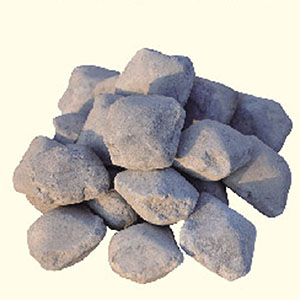Telephone:
+86 0417-3909999
Fax:
+86 0417-3909999
Contact:
Mr. Liu
website : en.ykblnc.com
company website:
www.ykblnc.com
E-mail:
bllzj888@163.com
address:
19-1 East, North Line, Yingda Road, Laobian District, Yingkou City, Liaoning Province
Magnesia-chrome brick is an alkaline refractory product containing MgO 55%~80%, magnesia carbon brick Cr2O3 8%~20%, and magnesia carbon brick electric furnace is used for the converter. The magnesia carbon brick for the converter is made of periclase and composite. Spinel and a small amount of silicate phase. The composite spinel includes a spinel solid solution such as MgAl2O4, MgFe2O4, MgCr2O4, and FeAl2O4.
Magnesia-chrome bricks have been rapidly developed since the 1960s due to the improvement of raw material purity and firing temperature. At present, magnesia-chrome bricks can be divided into ordinary bricks, direct-bonded bricks, co-sintered bricks, and combined bricks according to different production methods. Casting bricks, etc.
(1) ordinary magnesia chrome brick
This is a traditional product, with chrome ore as coarse particles and magnesia as fine powder. Or the two materials are composed of grading particles, and the firing temperature is generally 1550 to 1600 °C. The microstructure of this brick is characterized by little direct bonding between chrome ore and periclase, mostly silicate (CMS) cementation or fissure separation; less desolvation phase in periclase, less direct in matrix Combined, the brick has poor mechanical properties and poor slag resistance.
(2) Direct combination of magnesia chrome bricks
The direct combination of magnesia-chrome bricks is developed on the basis of ordinary magnesia-chrome bricks. The production characteristics are mainly two points. One is to use relatively pure raw materials, and the other is to use a higher firing temperature. The so-called direct combination means that there is more direct contact between the chrome ore particles in the brick and the periclase, because the SiO2 in the raw material is less (controlled below 1% to 25%), the amount of silicate formation is small, and the temperature is high. The firing means causes the silicate to be extruded into the corners of the solid phase particles. Thereby increasing the direct combination of the solid phase.

The direct combination of magnesia-chrome bricks has high direct strength, slag resistance, erosion resistance, erosion resistance, corrosion resistance, excellent thermal shock stability and volume stability at 1800 °C.
(3) Co-sintered magnesia chrome brick
The production process of the product is characterized in that a mixture of magnesia and chrome ore fine powder is mixed in a high-temperature furnace to achieve a solid phase reaction for the direct combination of secondary spinel and magnesia-chromium ore. A co-sintered material is taken, and a fired product or a chemically bonded product is produced from the material.
The direct bonding and microstructure uniformity of the co-sintered magnesia chrome bricks is better than that of the direct combination bricks. The amount of the perovskite desolvent phase and the intergranular secondary spinel is more. The co-sintered magnesia chrome brick has a series of direct Combining the better performance of bricks, especially high temperature strength, temperature resistance and slag resistance.
The co-sintered bricks can also be divided into two varieties. One is the co-sintered bricks, the granules and the fine powder are all common sinter, and the microstructures of the composites are basically similar whether they are fired or chemically combined; Sintered brick, part of the ingredients, such as coarse granules with common sinter, and fine powder part can be mixed into the brick with fine chrome ore and magnesia powder in a certain proportion, so that the fired and chemically bonded products are in the microscopic The structure is different.
(4) Recombined magnesia chrome brick
The magnesia-chromium mixed powder is melted by electrofusion, and the crystallization of the magnesia-chromium mixed powder is formed into a relatively uniform microstructure, and the magnesia-chromate spinel and the periclite mixed crystal are mainly composed of the raw materials. The chrome material is pulverized into a certain particle size, mixed and formed, fired to prepare a re-bonded brick, or directly used as a chemical slab.
The microstructure of the combined brick is characterized by a high degree of direct bonding and a large amount of spinel desolvent phase: a base crystal containing a large amount of desolved phase, which essentially changes the physicochemical properties of the periclase, such as lowering the coefficient of thermal expansion. Improve the thermal shock resistance and improve the resistance to acid-alkaline slag erosion. The combined brick has the same properties as the cast brick, but has better temperature resistance and more uniform microstructure than the cast brick.
The combination of magnesia-chrome bricks is a fine-grained matrix with uniform pore distribution and micro-cracks, which is more sensitive to rapid temperature changes than casting. The high temperature performance of the product is between the cast brick and the direct joint brick.
(5) Casting magnesia chrome brick
The magnesia and chrome ore mixture is completely melted in an electric arc furnace, and then the melt is injected into a refractory mold for casting. Produces stable periclase and spinel crystal phases during solidification, and at the same time forms a fine crystal structure, so the cast magnesia chrome brick has excellent high temperature strength and slag resistance.